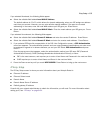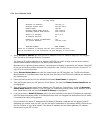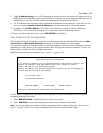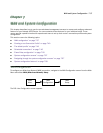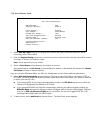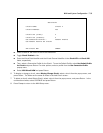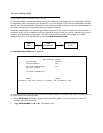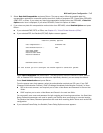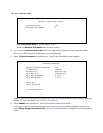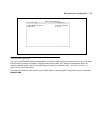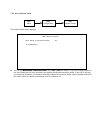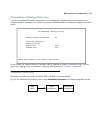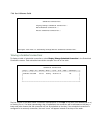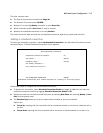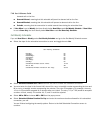
WAN and System Configuration 7-41
3. Select Data Link Encapsulation and press Return. The pop-up menu offers the possible data link
encapsulation methods for connection profiles used for a variety of purposes: PPP, Frame Relay, RFC1483,
ATMP, PPTP, or IPsec. If you select any data link encapsulation method other than RFC1483, a Data Link
Options menu item is displayed; if you select RFC1483, Data Link Options is hidden.
4. If you chose any data link encapsulation method other than RFC1483, select Datalink Options and press
Return.
■ If you selected ATMP, PPTP, or IPSec, see Chapter 10, “Virtual Private Networks (VPNs).”
■ If you selected PPP, the Datalink (PPP/MP) Options screen appears.
Select Data Compression and press Return. The pop-up menu offers the choices of None, Ascend
LZS, or Standard LZS. Unless you are otherwise specifically directed, you can accept the default.
Select Send Authentication and press Return.
From the pop-up menu that appears, select the authentication method your ISP uses, if any: PAP
(Password Authentication Protocol), CHAP (Challenge Handshake Authentication Protocol), or None.
■ PAP is the most common, and requires you to enter a User Name and Password in the next two
fields.
■ CHAP requires you to enter a Host Name and Secret in the next two fields.
You can specify user name and password for both outgoing and incoming connections. the Send User
Name/Password parameters are used to specify your identity when connecting to a remote location.
The Receive User Name/Password parameters are used when receiving dial-in clients such as via RAS
configuration.
■ If you selected Frame Relay, the Datalink (Frame Relay) Options screen appears.
Datalink (PPP/MP) Options
Data Compression... Standard LZS
Send Authentication... PAP
Send User Name:
Send Password:
Receive User Name:
Receive Password:
Maximum Packet Size: 1500
In this Screen you will configure the PPP/MP specific connection params.



